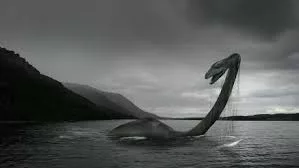Throughout human history, tales of sea monsters have captured our imaginations, stirring a sense of awe, fear, and wonder. From ancient civilizations to modern seafarers, stories of monstrous creatures lurking beneath the waves have persisted. These mythical beings have been depicted as colossal, fierce, and sometimes benevolent, adding a touch of mystery to the vast oceans that cover our planet. But do sea monsters truly exist, or are they merely figments of our collective imagination? In this article, we embark on a journey to explore the fascinating world of sea monsters, delving into the realms of myth, legend, and scientific curiosity.
Origins of sea monster legends
The origins of sea monster legends can be traced back to early seafaring cultures that encountered the vast and unpredictable oceans with trepidation. Sailors, venturing into the unknown, would share stories of creatures that defied explanation. These tales often served multiple purposes, including warning fellow mariners of potential dangers, imparting moral lessons, and adding an element of adventure to the vast maritime expanse.
Ancient cultures and their sea monsters
From the Greeks’ Charybdis and Scylla to the Norse Kraken, ancient civilizations crafted stories around fearsome sea creatures to personify the perils faced on their voyages. Some legends were influenced by actual encounters with real marine animals that were perceived as monstrous due to their size or unusual appearances.

The Kraken, a colossal cephalopod creature described in Norse mythology, is believed by some scholars to be inspired by sightings of the giant squid (Architeuthis). While the creature’s exaggerated attributes were likely the result of storytelling embellishments, the underlying idea of a sea monster lurking in the depths retains its allure.
In the East, Chinese folklore spoke of the Dragon Kings, powerful sea creatures with dominion over the oceans, who could wield storms and protect sailors from harm. These benevolent sea monsters embodied a different perspective, offering hope and protection amidst the unknown waters.
Sea monsters in modern folklore

As maritime exploration expanded in the Age of Discovery, new tales of sea monsters emerged. These narratives often reflected the cultural fears and superstitions of the time. The infamous story of the Loch Ness Monster, “Nessie,” in Scotland, is one such example. While countless sightings have been reported, no concrete evidence has ever been found to prove the existence of this elusive creature.
Real-life monsters of the deep
While many sea monster stories are rooted in folklore and myth, some are grounded in real-life encounters with large marine creatures. The blue whale, the largest animal on Earth, can grow up to 100 feet in length and is often described as a modern-day sea monster. Similarly, the elusive giant squid, with its enormous tentacles and eerie appearance, has sparked curiosity and inspired tales of monstrous sea creatures.
In the realm of extinct animals, prehistoric marine reptiles such as the Mosasaurus and the Kronosaurus once roamed the oceans. While these creatures were genuine inhabitants of ancient seas, their exaggerated portrayals in popular media and entertainment have further fueled the mythos of sea monsters.
Scientific inquiry and cryptozoology
The study of animals whose existence is disputed or remains unconfirmed falls under the purview of cryptozoology. While mainstream science tends to be skeptical of cryptozoological claims, some researchers continue to investigate alleged sightings of sea monsters with an open mind.
Advancements in marine technology have allowed scientists to explore the depths of the oceans more extensively. However, despite these advancements, the oceans remain one of the least explored regions on Earth, leaving ample room for speculation and mystery.
Conclusion
The allure of sea monsters will forever captivate the human imagination, as they represent the mysteries and untamed wonders of the deep. While some sea monster legends find roots in real-life encounters with massive marine creatures, others are fantastical tales crafted to convey a sense of wonder and caution. In the end, whether sea monsters exist or not, their enduring presence in our myths, folklore, and popular culture reflects our deep connection to the enigmatic oceans that cover our planet. As long as the seas continue to whisper their secrets, the allure of sea monsters will endure, inviting us to explore and respect the vast and uncharted realms beneath the waves.



